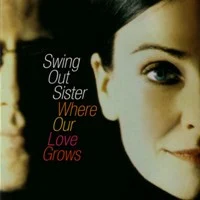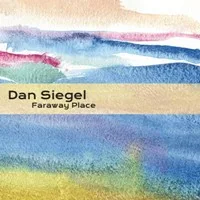Year: 2005
File: MP3@320K/s
Time: 38:31
Size: 88,8 MB
Art: Front
(4:59) 1. In Salah aka In Shalah
(5:46) 2. Composin' at the Composer
(6:01) 3. Jouons
(4:30) 4. Rural Route
(5:43) 5. Promised Land
(4:54) 6. August Moon
(6:35) 7. The Prestidigitator
Sicilian-born pianist "George Wallington" (his given name was Giacinto Figlia) had more than ethnicity in common with Dodo Marmarosa. Both men were active in the burgeoning bop scene of the early and mid-'40s, both made important contributions to the evolution of modern jazz, and both withdrew from public activity for protracted periods of time. Most importantly, both of these excellent pianists left enough great music in their wake to warrant a reappraisal of their legacies. Wallington named Mel Powell, Al Haig, and Bud Powell as his favorite contemporaries; primary influences were Art Tatum, Count Basie, and especially Earl Hines. He collaborated and consulted with Charlie Parker, Dizzy Gillespie, Oscar Pettiford, and Max Roach during bop's formative years; later he would befriend young Mose Allison and help him to get established as both recording artist and jazz essayist.
Recorded in early April 1957 and released on the East West label the following year, Wallington's album The Prestidigitator is an excellent example of his creative approach to the art of jazz. His quintet/quartet on this album consisted of bassist Teddy Kotick, drummer Nick Stabulas, Detroit-born tenor saxophonist J.R. Monterose, and bass trumpeter Jerry Lloyd, who sounds for all the world like a valve trombonist. Three of the seven pieces were composed by Mose Allison, two by Monterose, one by Lloyd, and only one the quirkily titled "Composin' at the Composer" by Wallington himself. This was the first time that anyone besides Mose Allison recorded Mose Allison's original compositions.
Even Allison hadn't yet recorded "Rural Route" when Wallington worked it into this pleasantly bop-based album of early modern jazz. Allison's "Promised Land" is particularly soulful and straight-ahead. Stylistically, this stuff lands somewhere amongst Art Blakey's early Jazz Messengers, Hank Mobley, Sonny Stitt, Johnny Griffin, and some of that mid-'50s Mingus with John LaPorta. That means it's really good and maybe you ought to check it out. For those who are squinting at a digitally condensed thumbnail reproduction of the album cover and trying to decipher what's going on, it depicts a magician (or prestidigitator) as seen from upstage rather than from the audience's point of view. As he prepares to pull a rabbit out of his inverted hat, the animal is clearly visible inside of a wooden box on a collapsible stand, held in readiness by a child or midget concealed within.~ arwulf arwulf https://www.allmusic.com/album/the-prestidigitator-mw0000565954
Personnel: Piano – George Wallington; Bass – Teddy Kotick; Drums – Nick Stabulas; Tenor Saxophone – J. R. Monterose; Trumpet – Jerry Lloyd
Recorded in early April 1957 and released on the East West label the following year, Wallington's album The Prestidigitator is an excellent example of his creative approach to the art of jazz. His quintet/quartet on this album consisted of bassist Teddy Kotick, drummer Nick Stabulas, Detroit-born tenor saxophonist J.R. Monterose, and bass trumpeter Jerry Lloyd, who sounds for all the world like a valve trombonist. Three of the seven pieces were composed by Mose Allison, two by Monterose, one by Lloyd, and only one the quirkily titled "Composin' at the Composer" by Wallington himself. This was the first time that anyone besides Mose Allison recorded Mose Allison's original compositions.
Even Allison hadn't yet recorded "Rural Route" when Wallington worked it into this pleasantly bop-based album of early modern jazz. Allison's "Promised Land" is particularly soulful and straight-ahead. Stylistically, this stuff lands somewhere amongst Art Blakey's early Jazz Messengers, Hank Mobley, Sonny Stitt, Johnny Griffin, and some of that mid-'50s Mingus with John LaPorta. That means it's really good and maybe you ought to check it out. For those who are squinting at a digitally condensed thumbnail reproduction of the album cover and trying to decipher what's going on, it depicts a magician (or prestidigitator) as seen from upstage rather than from the audience's point of view. As he prepares to pull a rabbit out of his inverted hat, the animal is clearly visible inside of a wooden box on a collapsible stand, held in readiness by a child or midget concealed within.~ arwulf arwulf https://www.allmusic.com/album/the-prestidigitator-mw0000565954
Personnel: Piano – George Wallington; Bass – Teddy Kotick; Drums – Nick Stabulas; Tenor Saxophone – J. R. Monterose; Trumpet – Jerry Lloyd
The Prestidigitator




















